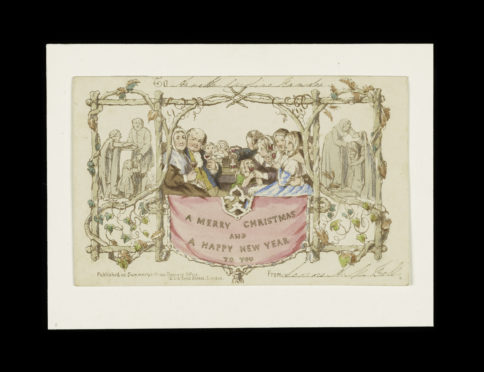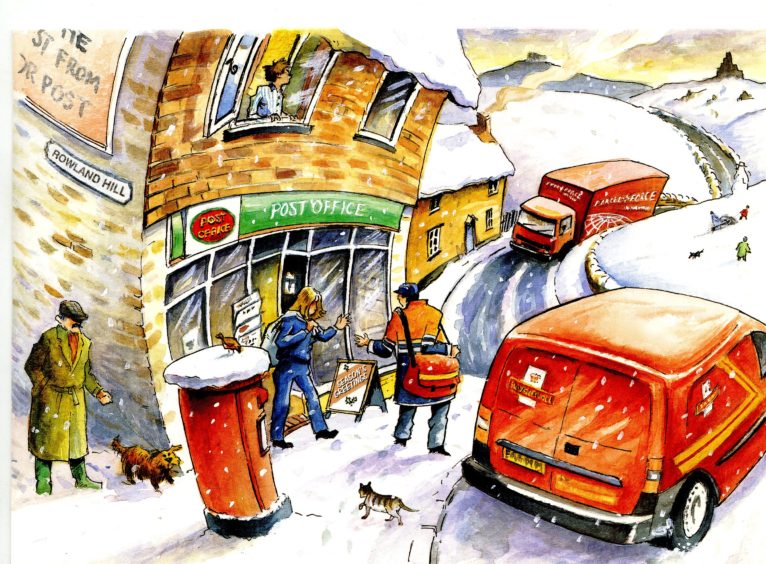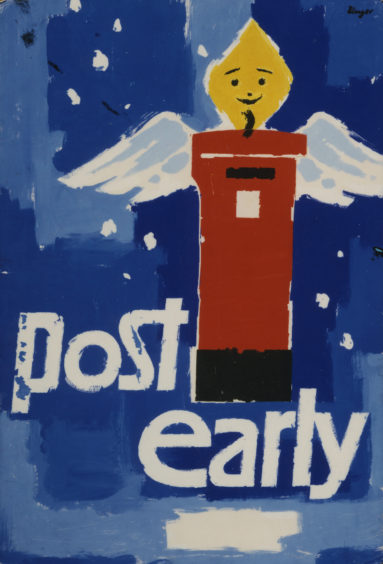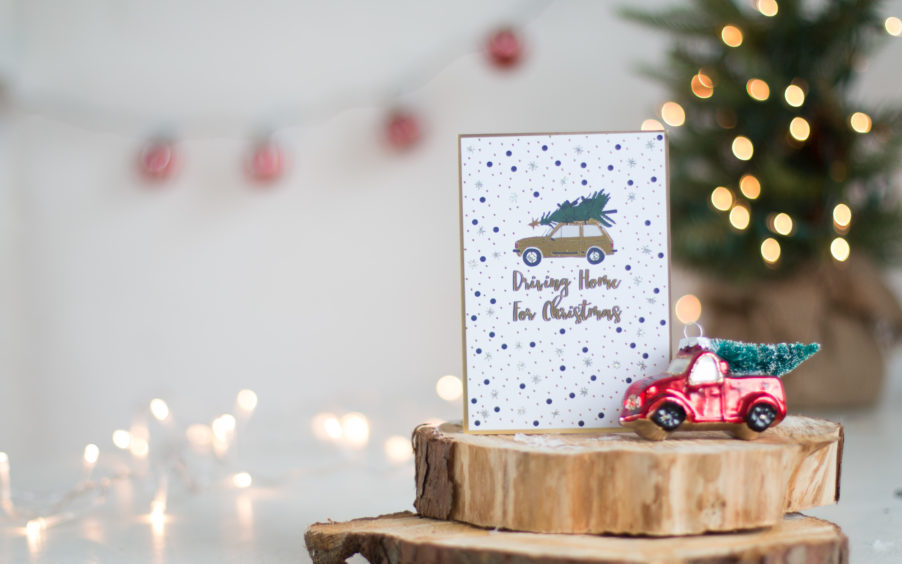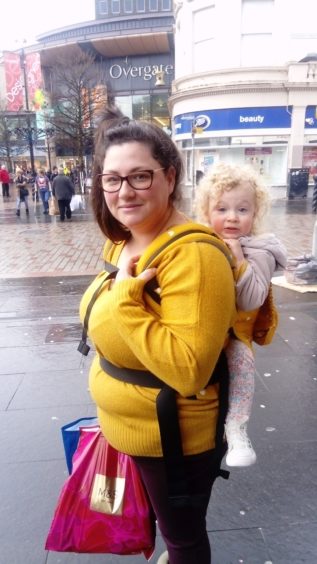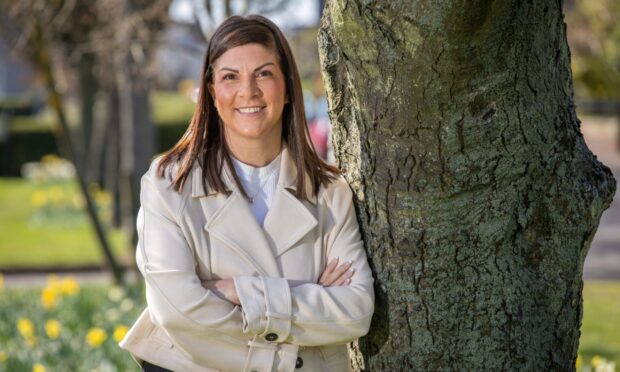Are we still sending Christmas cards through the post or relying on technology for our Christmas greetings? Caroline Lindsay finds out more.
A happy family group, all quaffing glasses of red wine (including a small child) adorns the world’s first commercial Christmas card, together with the greeting: “A Merry Christmas and a Happy New Year to You.” Produced in 1843 by civil servant and inventor Sir Henry Cole, only 1,000 of his Christmas cards were printed and sold for a shilling each – making them a luxury beyond the means of the working class.
Nevertheless, this Victorian entrepreneur started a tradition that has endured ever since.
But in this digital age, is sending Christmas cards as popular as ever or are we resorting to sending e-cards and text greetings instead?
After all, let’s be honest, receiving e-Christmas cards just doesn’t cut it compared to the satisfying thud of a bundle of cards landing on your doormat. Luckily the reassuring news is that, despite our ever-increasing reliance on technology, when it comes to sending festive greetings, most of us are still opting for the old school approach.
New research from Royal Mail reveals that sending Christmas cards is still our favourite way of spreading festive cheer, with almost eight in 10 saying that sending cards is their favourite way of sending season’s greetings to family and friends. Overall, it’s one of the most important elements of the festive season – more than turkey, carol singing or Christmas shopping.
When asked why Christmas cards are so synonymous with the festive season, over half love displaying them in their homes, 45% look forward to reading the messages inside, and a further 45% enjoy the thrill of receiving something through the post.
Christmas cards are still popular amongst the younger generation, with just over half of 18-24 year olds preferring to send cards as a way of spreading festive cheer, compared to texting or WhatsApping.
Mark Street, head of campaigns at Royal Mail, says: “Whilst social media is a great way of keeping in touch on a day-to-day basis, there’s something inherently festive and heart-warming about sending and receiving a physical card through the post, which someone has lovingly taken the time to write. Put simply, sometimes a letter or card is better.”
Amanda Fergusson, CEO of the Greeting Card Association (which celebrates its centenary next year), adds some interesting stats to the mix: “We’re continuing to send more cards per person in the UK than any other country. In 2017 we sent just under 1 billion Christmas cards and the overall card market online only accounts for six per cent.
“People love receiving cards, and in this digital age it’s interesting to note that 18-34 year olds are buying more cards than a generation ago, demonstrating that cards remain the preferred choice when it comes to expressing a personal message and making someone feel extra special.
“It’s important for people to choose an image and a message that means something to the recipient.”
Charities also benefit enormously from the sale of traditional Christmas cards and the Greeting Card Association estimates that nationally, overall, charity Christmas cards bring in around £50 million per year for UK charities.
Cards for Good Causes, which supports more than 250 UK national and local charities, has raised over £40 million for its charities in the past 10 years. The company’s CEO, Jeremy Lune, says: “While digital communications have replaced traditional written Christmas cards for some, we are finding that many people – and an increasing number of young people – are choosing a more personal touch at Christmas for friends and loved ones.
“Charity Christmas cards are an important way for charities to raise awareness of how they help people, and they are a crucial source of annual income. They also offer people a thoughtful way to send festive greetings at a time of year when we are considering those less fortunate than ourselves,” he continues.
Graeme Brown, Director of Shelter Scotland, explains: “There are many ways in which we raise money to help fund our work – from shops to sponsored events and generous donations – and a very popular one is through the sale of Christmas cards.
“Raising as little as £10 pounds can pay for one of our advisors to help a family facing homelessness.
“Shelter Scotland cards are available online and from our charity shops and are of very high quality. We are grateful to everyone for buying our cards and supporting our vital work to end bad housing and homelessness.”
And Morna Simpkins, director of MS Society Scotland, comments: “In the past four years the MS Society has raised more than half a million pounds UK-wide through Cards for Good Causes. This helps provide important support – such as our Helpline – and fund ground breaking research in Scotland and across the UK.”
Another option is to send friends and relatives an e-card and, instead of buying and sending Christmas cards, make a donation to charity instead.
Dr Alex Avramenko of Abertay University’s Dundee Business School adds: “Christmas cards, and greeting cards in general, are one of the focal points of the festive season.
“The variety is huge, but the main choice usually lies between sending an e-card or a traditional paper card. Traditional paper-based cards are definitely not about to become extinct – in fact, it’s the opposite.
“Online technology has been applied to the design and production of traditional cards, lifting them to the next level of personal expression.
“Handmade and 3D pop up greeting cards have also been enjoying a steady growth in last two years due to their uniqueness and impressive craftsmanship,” he points out.
“Companies like LovePop and Shutterfly, as well as the well-established providers of traditional paper-based cards, such as Hallmark and Paperchase, continue to sustain the greeting card industry, which I believe is alive and well, not only for today, but for well into the future.”
Your view
“I send them every year – it’s just something I’ve always done. People like getting a card at this time of year.”
Brian Harris, retired
“I always send cards to family and I like receiving them too. Customers give us cards for the shop too, which is nice.”
Robert Lawrence, owner of R&M Sole and Heel Bar, Keiller Centre, Dundee
“I’ve been sending Christmas cards since I had my own money – I’m quite traditional at heart. I love receiving them too and they make the house feel festive.”
Kerry Stephen, full-time mum
“I have this argument each year with my mum and gran! They always send cards but I think it’s a waste of resources when our planet is dying. I’ve got no problem with the
sentiment though.”
Douglas Wark, graduate
